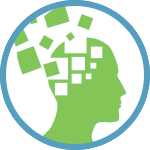

Living and Working with Post Traumatic Stress Disorder
You may be surprised to learn that about 1% of the population is suffering from Post Traumatic Stress Disorder (PTSD) at any time. But what exactly is PTSD and who is likely to be a sufferer? You’ll find the answers in this online course. You learn when and how people are likely to develop PTSD, how to spot the symptoms and what sort of help is available to assist people living with this complex condition. If you want to have a deeper understanding of PTSD this course will be invaluable.
Here you are introduced to PTSD including its history, clinical definitions, who is most at risk and modern day diagnosis. Then you look at the criteria to establish PTSD and the demography of PTSD.
This module looks at 12 case studies taking in both large scale disasters and personal traumas covering the period 1914 to the present day and how this affected the people involved.
In this module you look at how children cope with PTSD and how to recognise the behaviour changes and characteristics of PTSD unique to children. Next you cover the trauma of abuse. Finally, you learn about the trauma of the chronically ill and life-limited children and how to meet the needs of the sufferer as well as their families.
In this module you examine the symptoms of PTSD including: intrusive, avoidant, physical and social symptoms.
You examine different models of recovery, what may affect someone’s recovery and receive some valuable advice for those in early recovery. You also look at the long term prospects of PTSD survivors and learn how thinking has been revised for those in advanced recovery.
This module covers defusing and debriefing. Then you move onto how debriefing should be conducted including: who does it, who is invited, how long it should last, what happens afterwards. Then you look at different approaches, training, supervision and ethics for debriefers. Finally you examine different debriefing models.
Here you learn about the various treatments for PTSD including: drug therapy, psychotherapy, counselling, crisis counselling, imaginal exposure, real life exposure, physiotherapy, relaxation and occupational therapy. Then you look at Eye-movement Desensitisation and reprocessing including what it is, how it works and what happens during therapy. Finally you cover alternative and new age therapies such as aromatherapy, neuro-linguistic programming, play/art therapy and prayer healing.
Your assignment will give you the chance to review and really think about everything you have learnt in the course.
As you can see, your course covers everything you need to gain a deep understanding of PTSD. So, enrol today!
Living and Working with Post Traumatic Stress Disorder
£149.00By taking this course you’ll gain all the tools to make your project a success. And, it only takes a few minutes to get started.